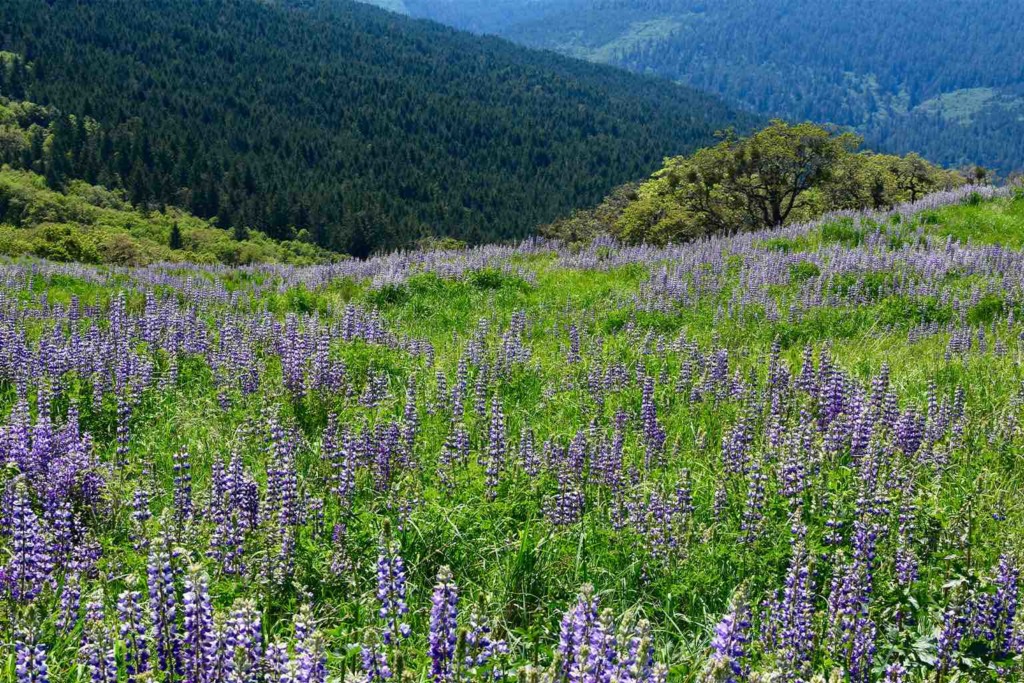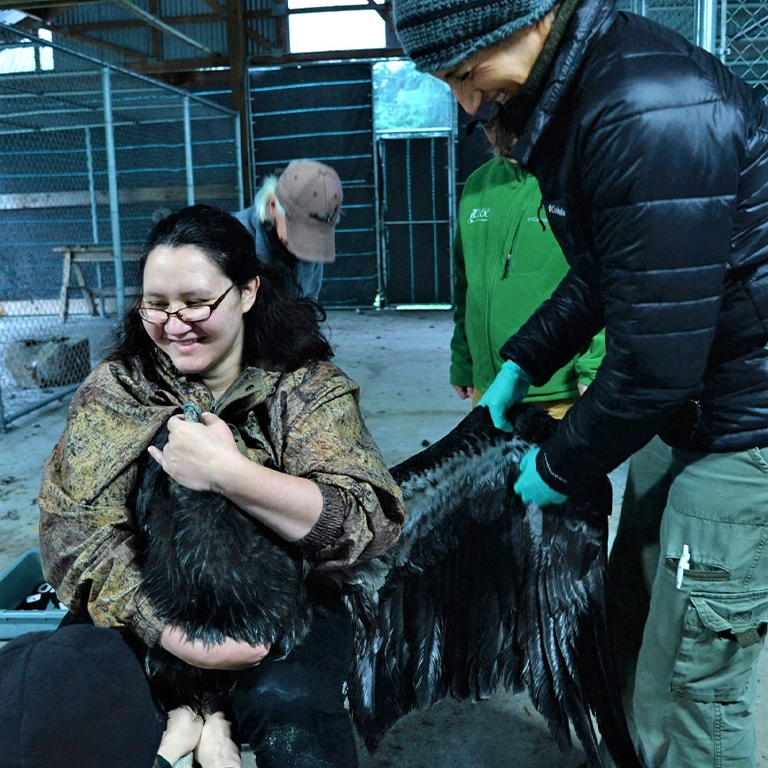The California condor is a beautiful large bird that is very important to the Yurok Tribe of Northern California. The California condor features prominently in Yurok stories, ceremonies, and traditions. In the Yurok language, the condor is known as prey-gon-eesh.

A released California condor with a wing transmitter soars in the sky. Image courtesy of Chris West.
California condors nearly went extinct in the late 20th century. They are still critically endangered. However, conservation efforts have helped the wild population grow. There are now several hundred condors in the wild across their historic range in western North America.
In recent years, members of the Yurok Tribe have been working hard to lead the return of condors to their ancestral lands. Condors have not lived in this part of Northern California for over one hundred years.
Members of the Yurok Tribe are using traditional knowledge of where the condors used to live to help guide their return. They are working with the United States Fish and Wildlife Service (USFWS), which is the government agency in charge of recovering the condor population.

The Bald Hills in California. The Yurok Tribe and the local Redwood National and State Parks are working together to reintroduce the California Condor to the area. Image courtesy of National Park Service.
Tiana Williams-Claussen, director of the Yurok Tribe Wildlife Department, and her colleagues have done many studies to prove that condors can safely be reintroduced. The California condor is a scavenger, meaning that it mostly eats dead animals. Many dead animals could possibly have toxic levels of lead or pesticides in them that could poison the condors when they eat them.

Tiana Williams-Claussen, director of the Yurok Tribe Wildlife Department, at a handling training at the Oregon Zoo. Image courtesy of Matt Mais.
The Yurok researchers and their colleagues measured the amount of lead in other scavenging birds in the region, like turkey vultures and ravens. They measured pesticides in dead marine mammals in the environment that would be the prey of condors if they were released. They showed that condors could eat their prey animals in the region without being poisoned.
Starting in 2022, four condors will be released into Redwood National and State Parks.

Tiana Williams-Claussen (in red shirt) releases condor 208 after testing it for blood lead and replacing a wing transmitter, with Ventana Wildlife Society biologists Sayre Flannigan and Kristy Markowitz. Photo courtesy of Chris West, Yurok Tribe.
“I want to express how honored and happy I am to be part of this story,” said Tiana Williams-Claussen. “I’ve realized my dream as a Yurok woman to come back and serve my tribe in a way that is really going to make an impact on our youth — on my daughter and the children to come.”

The California condor (known as prey-gon-eesh in the Yurok language) is a species of particularly high cultural importance to the Yurok Tribe. Image courtesy of Chris West.






